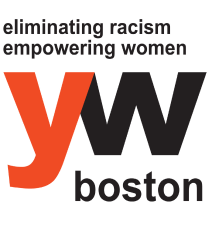
July 30, 2024
By: Aaron Halls
“An imperative to design our workplaces:” A conversation on the importance of BIPOC psychological safety
Without psychological safety, the routine facets of our life can become overwhelming and unsafe for our mental health. July is BIPOC Mental Health Awareness Month, and we wanted to focus on the imperative for organizations to focus on psychological safety for their employee’s well-being in the workplace. This is especially important for employees who identify as BIPOC (Black, Indigenous, and people of color), who face inequities and injustice on a routine basis.
BIPOC workers can experience different or unfavorable treatment for various aspects of their identity, including their race and skin color. This unfavorable treatment, such as bullying or discrimination, can have a severe impact on their mental health and ability to succeed in their roles. For example, a Gallup survey found that “Black and Hispanic employees who experience discrimination are substantially less likely to report being satisfied with their place of employment as a place to work, even less satisfied than White employees who feel discriminated against.”
Absolutely no one should experience bullying or discrimination in their work environment. These conditions erode the physical and psychological health of employees and the health of an organization’s infrastructure. By taking steps to prioritize the psychological safety for their employees, leadership teams provide an intentional antidote to toxic work conditions, providing a space for BIPOC employees to feel safe, seen, and to thrive.
To learn more about psychological safety and why organizations should prioritize it, we briefly talked to Samantha Isabel Calero, MPH (She/Her/Hers), YW Boston’s Vice President of People and Culture. Samantha provides helpful insight into psychological safety and its importance.
Someone might be hearing the phrase “Psychological Safety” for the first time and not know what that means. How would you define this for someone unfamiliar with this phrase?
Psychological safety at its core is the condition that facilitates learning and growth and change amongst individuals and teams, and an organization. Psychological safety can have different levels. Does someone feel safe to be present and feel included? Does somebody feel safe to participate? Does somebody feel safe to challenge and ask questions? So, it’s not a static, “You’re either psychologically safe, or you’re not.”
But what we want to think about is, how are we continually moving towards deeper engagement where people can have hard conversations, ask hard questions, engage in generative conflict, and not be worried that they will face retaliation or getting shut down and silenced or otherwise having a negative experience that subtly but clearly sends the message? “You shouldn’t do this again; you shouldn’t speak up.”
Why is it important for employers to focus on mental health and psychological safety in their work environments for BIPOC employees?
There’s so many reasons. At the highest level, we cannot discount the impact of the COVID-19 pandemic, the impact of the movement for Black lives, the other confluences of calls for social justice, for people with lived experiences of those systemic and institutional issues and structures. That’s all to say that the past several years has been rough, and we’re still going through it. We know that people bring themselves to work — it is a folly to expect someone to leave their trauma [and] their experiences of oppression at the door. It is a folly to expect that our workplaces or any space are colorblind or otherwise unseeing or unhearing of marginalization that staff go through.
And those experiences — there is rich literature that clearly documents and describes the negative physiological impacts of the stress from discrimination and marginalization on people’s mental health and well-being. At this point it is not an ambiguous conjecture or question. So, knowing that we have not just an opportunity, but really an imperative to design our workplaces, to acknowledge that and, and safeguard against that.
And so that’s why it’s so important — knowing what so many different folks from all different walks of life are going through and especially folks who are living at the intersections of multiple forms of oppression and discrimination. How do we design spaces and processes and teaming approaches, policies and procedures? All of that in a thoughtful way that promotes resiliency and cohesion ultimately, that will promote productivity and success and retention?
Polls such as the Gallup Survey have found that when experiencing discrimination, Black and Hispanic workers feel less valued, that their strengths are not being built upon, that their supervisors are not creating a trusting environment.
What can supervisors or leadership teams do to ensure an environment free from discrimination and bullying, or to ensure that BIPOC workers feel empowered to speak up?
I think managers and supervisors have an important opportunity to both promote high expectations and provide high support to employees. Having consistency in communication — seeing people as their whole selves and creating space within the supervisory relationship to talk about not just the technical aspects of the work, but also the relational and adaptive parts that are a part of every organizational culture is critical because of power dynamics. If supervisors don’t create the space for that, there’s a lot that may go unsaid because as BIPOC we’re often socialized and trained to keep our heads down and be in survival mode. If we just do the thing, that’s how we survive. If we fit in, if we don’t cause waves.
I think the other side of the coin of that — and this is particularly true as a dynamic of anti-blackness and misogynoir — of when somebody does raise an alarm or say, “Hey, I’m concerned about this.” That can be taken in a very different context than if a white [colleague] does the same thing or says the same [thing]. And so, I think managers also have a real responsibility to manage bias at the interpersonal level and be very mindful of how to partner with their supervisees to take them seriously when challenges [are] around — whether it’s bullying or microaggressions, or other forms of discrimination that pop up at the leadership level, at the sort of institutional level. I think that is a huge responsibility of the organization’s leaders to empower and support managers to standardize those practices and expectations and also make sure that there’s a really robust policy backstop.
Here, things around violence free workplace, nondiscrimination, anti-bullying, are explicit in employee handbooks. It is very clear about what is acceptable behavior, what is unacceptable behavior and what the consequences are. Then ensuring that when there are violations that there are those consequences carried out. I think that there are restorative [and] transformative ways to do that. It doesn’t have to be grounded in a punishment approach or a carceral approach.
[It’s important to have] that lens of, “We need to keep everybody safe.” And some folks just by virtue of how they move through the world are more vulnerable. There are ways to think through that at the org policy level. And, I think having an equity and inclusion lens around those types of policies is important because that’s where you can start to peel back the onion layers and think about, “Okay. Yes. Sexual harassment is very serious, but also racist microaggressions are very serious.” But if we as leaders don’t have those conversations, if we don’t enshrine them in policy, if we don’t have intention around that, I think there’s a lot that can get lost in the sauce, and that is a failure.
_____________________
This article is part of “Thriving Together: Building a Resilient Work Culture During Contentious Times,” an initiative dedicated to helping employers build a supportive workplace culture that empowers employees to navigate and thrive despite external pressures and internal conflicts—all through a DEI lens. Make sure to stay connected with us to receive guides, toolkits, and online resources that provide practical advice for fostering an inclusive and supportive work culture during tumultuous times.

